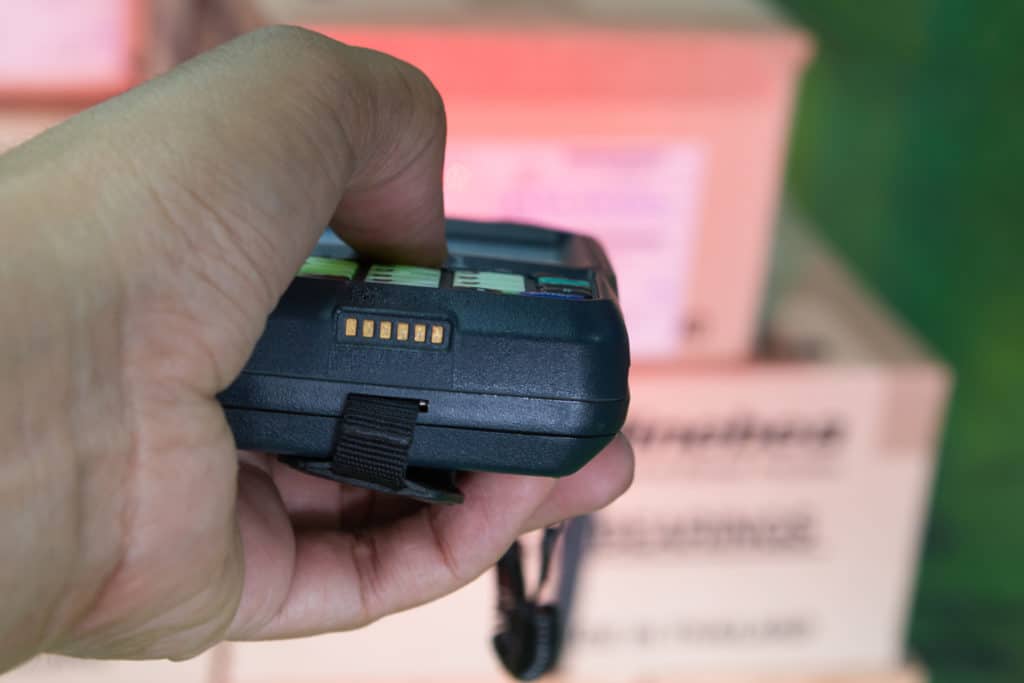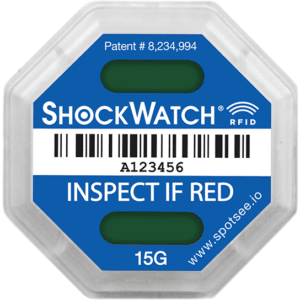Smart Technologies – Like RFID Labels – Transform Supply Chain in 2020
Digital transformation is one of 2020’s top trends — and challenges — for industrial supply chains, as organizations scramble to become smarter, more automated, and more efficient. When it comes to goods, this means using smart technologies to streamline logistics, asset management, and inventory to not only save time and money, but to uncover fresh insights that can lead to savings throughout the organization.
While IoT, cloud connectivity, and big data all offer new frontiers of optimization, innovative, yet familiar, technology such as passive RFID labels provide a clear path to digitization without the added cost or complexity. Adding features such as condition monitoring to a simple RFID label takes supply chain optimization even further.
Companies today are challenged by global supply lines, incomplete data, and inaccessible information. In a ‘just-in-time’ world, any inefficiency – whether in the supply chain or asset management system – forces companies to hold more inventory.
Specifically, if items are lost, misdirected, or damaged at any point during manufacturing, delivery, and installation–companies need extra inventory to compensate. Keeping an inventory surplus, however, is expensive. It takes extra capital, extra storage space, and extra management time.
Smart Technologies are Vital — Enter the RFID Supply Chain
Optimized inventory management and logistics systems, in contrast, use smart technologies to make the most of each and every asset. RFID technology is a major component in smart strategies.
NASA, Boeing, Decathlon, Pfizer, and others consider RFID shipping solutions an integral part of their logistics, asset management, and inventory systems. For example, Boeing uses RFID tags to track aircraft components throughout its own manufacturing facility as part of its lifecycle management program. Delta Airlines uses RFID labels to track each aircraft’s in-cabin emergency equipment. Pharmaceutical giant Pfizer uses RFID labels to not only track inventory but to thwart counterfeiting of expensive medications.
The international sporting goods store Decathlon adds passive RFID tags to its goods at its own factories and (for third-party goods) at its distribution centers. This increases inventory accuracy and streamlines customers’ ability to order items online and pick them up in stores. Decathlon credits the RFID tags with helping to increase sales.
Benefits of Tracking Assets with RFID Labels
- Streamlining asset management. When each item bears an RFID tag, those items can be tracked automatically as they move throughout the supply chain or throughout a facility. As a result, managers know exactly which items are on-hand and which are in transit and can plan accordingly.
- Minimizing human error. Because RFID labels are scanned automatically when they pass RFID readers, inventory management doesn’t depend upon a human to scan or enter each item. Consequently, inventories are more accurate.
- Reducing counterfeiting. The serial numbers on RFID tags can be linked to the serial numbers on specific products. If they don’t match upon delivery, they may have been diverted and counterfeit products may have been introduced during transit.
A Step Further: Adding Condition Monitoring to RFID Supply Chains
ShockWatch® RFID tags by SpotSee do all that and more. In addition to tracking item movements, these single-use, tamperproof indicators provide condition reports on their handling. This combination of RFID tag with impact indicator brings an entirely new level of optimization to supply chains. [1]
Bumped by a forklift? Bounced off a cargo chute? Tossed to the tarmac? When impacts or drops exceed user-specified thresholds, ShockWatch® RFID tags change color. More importantly, the next time they are scanned, they automatically report the impact.
That dual system makes it nearly impossible for damaged items to enter inventory. Not only can suspect items be flagged for detailed inspection upon receipt, they can be tracked and located even if they aren’t stopped at the loading bay door. SpotSee’s ShockWatch® RFID indicators, deter, detect, and diagnose damage. Here’s how:
- Deters damage. Because the single-use RFID indicator labels are visible, handlers know this package is being monitored for impacts as well as for inventory management. Handlers become more careful, because they know they’ll be held accountable. And, because the serial numbers may be correlated to those of specific products, slapping on a new indicator isn’t an option.
- Detects possible damage. G-force indicators built into the RFID tags are set for specific thresholds and are field armable. If a threshold event occurs, the tag turns red and, at the next scan, the impact is recorded in the user’s RFID management system, so there are two ways to identify and track potential damage.
- Diagnose damage. Knowing the impacts an item experienced is the first step in diagnosing hidden damage. While a product may look good on the outside, fine connectors may be broken or stressed internally, leading to immediate or eventual failure. With ShockWatch® RFID tags, these items can be flagged for inspection before they are shipped to customers or are put into production.
Combining RFID tracking with conditioning monitoring means managers have one source of truth. Because data is entered automatically into the organization’s warehouse management or enterprise resource planning system, managers have all the information they need in one location to track items and ascertain their condition.
Historic trend analyses add additional value. Because assets are scanned during handoffs, it’s easy to determine where most potentially-damaging impacts occur. With that knowledge, managers can investigate trouble spots and mitigate future damage by, for example, redesigning packaging, retraining staff, or changing routes or carriers.
SpotSee’s ShockWatch® RFID shipping solution is an important part of smart warehouses and smart logistics systems. By automating manual tasks and combining tracking and condition monitoring onto one tag, it goes a long way towards optimizing asset management from the factory all the way to the customer.
Fill out the form below to talk with an RFID supply chain expert to deter, detect, and diagnose damage in your own supply chain.










